Micromasters: Instructional Design & Technology
I took part in this online class organized by the University of Maryland in association with EdX in 2019 and 2020, in order to update my skills in course design for the digital age and online learning.
With the Covid-19 pandemic around the corner, this was fortuitous timing, and the things I learned on the course certainly helped in the development of courses I’ve produced for Lenguax.
The course is broken into four sections. For each of them it is expected that you produce some online materials, exploring each of the different concepts.
The course covers Learning Theories (different conceptions of the learning process which influence design decisions), Instructional Design Models (such as ADDIE) and Digital Media (using LMS, Articulate, Camtasia, Canva, video & audio production).
I reproduce the content that I was required to produce for the course below, for my own reference, and also to give an impression of what the course entails should you be interested. I do recommend it if you’ve interest in developing online learning materials: it gives some useful advice, links and suggestions and some frameworks for thinking about the decisions you need to make, as well as handy tools for the job.

LTD100x – Learning Theories
This first module covers some of the key ideas in learning as a concept: how do people learn? How do they learn best? How can we leverage this in course design?
As well as some of the main ideas and theories in learning, there were opportunities to practice some material development using Canva.com as a starting point.
Personal learning experience
For this task we had to recall some of our own learning experiences at different ages or stages in our career development.
Elementary School Learning Experience
I recall being taught at Primary School about haiku poetry by my teacher, Miss W., and some teaching assistants. We had to listen to them recite poems and count the syllables on our fingers together, before trying to write some ourselves. I remember it was the first time I’d been made aware of the concept of syllables. Presumably the reason for this was part of the syllabus to give us basic concepts about the English language in a fun way.
College Learning Experience
At university I remember a practical experiment for my Biology degree that involved measuring how far a grasshopper could jump, compared to a human, and then estimating the leg muscle mass and overall body mass, so as to work out the relative force produced by human and grasshopper muscles. It was an experiment devised by some of the teaching personnel there, and overseen by some post-grads. At university there was a much clearer understanding of why we were doing what we were doing: the rationale for it. Much of the learning was book-based, remembering facts, but some of it tried to involve us in realistic applications of theory.
Professional Learning Experience
For my teaching work, I did a diploma which involved researching and writing an essay on a teaching methodology, and then taking an observed class which had a lesson plan invoking this methodology. It was organised by Cambridge TESOL, and involved observers from outside of my school. So, it included aspects of both theory (the research) and practice (delivering a lesson based around these ideas).
Behaviourism
Behaviourism is a methodology that arose out of empirical science in the late 19th Century. Rather than focus on the subjective experience or thoughts of learners, psychologists such as JB Watson and BF Skinner believed that the observable actions of the learner in the environment were – fundamentally – the only things that mattered. Skinner went so far as to claim that facts about mental states are only demonstrable in externally observable behaviour. Behavioural repertoire is all there is, in terms of cognition, for a behaviourist.
The major premise of behaviourism is that brains are “wired” such that a given “stimulus” will reliably produce a particular “response”. Operant conditioning was the methodology, first demonstrated by Pavlov and his experiments on dogs, to produce a behaviour by providing positive reinforcement in response to the desired response to a stimulus. Negative reinforcement in the form of punishment can deter undesirable responses in a similar way.
For learning in general, behaviourism was highly influential in the early to mid 20th century, as educators looked for ways to leverage the “operant conditioning” demonstrated by Skinner and his colleagues in rats and pigeons to human behaviour, which they saw as analogous.
In language learning, behaviourism is represented in techniques such as the audio-lingual (“listen and repeat”) methodology, in which stimulus and response are repetitively drilled and feedback given directly to the learner.
Such techniques are reprised in more modern times in apps like Duolingo. This type of learning scenario: vocabulary development, can respond well to behaviourist treatments. Stimuli are provided in the form of pictures, and responses given in the form of clicks and/or spoken words to represent the pictures. Feedback is automatic and clear, helping to reinforce the learning positively or negatively.
This method can be engaging if done well, but there is a lack of evidence that performance in such learning tasks leads to more generalised fluency in the language.
References
McLeod, S.(Updated 2017) Behaviorist Approach. Retrieved from https://www.simplypsychology.org/behaviorism.html
The Audio-lingual Teaching Method. (n.d.). Retrieved from https://blog.tjtaylor.net/method-audio-lingual/
Constructivism
Constructivism is based on the notion that learners construct meaning through a combination of their prior knowledge, and their experience of the world. All new information is constructed upon existing knowledge, and influences it in sometimes complex ways.
Learning in the sense of understanding is an active process rather than a passive one, so learners need to engage with the concepts experimentally or through solving problems.
Vygotsky (1978, cited by McLeod, 2019) believed that knowledge is socially constructed – that is, meaning is built communally rather than individually.
In a constructivist language classroom, a learning scenario might be a form of task-based learning, in which learners watch a proficient speaker performing a task such as describing an object that has meaning to him or her (acting as a “scaffold”), and the teacher facilitates the learners to establish how the proficient speaker was able to do it, in terms of language and strategies used (in this way, the teacher acts as “facilitator”). The learners then perform a similar task, that refers to themselves. In this way, they are using their pre-existing knowledge and combining it with new knowledge through problem-solving.
References
McLeod, S.(2019) Constructivism as a theory for teaching and learning. Retrieved from https://www.simplypsychology.org/constructivism.html
Cognitivism and Connectivism
Cognitivism
Where behaviourism had ignored the process of “thinking”, seeing it as just another behaviour and irrelevant to the question of learning, cognitivism puts the mental processes of the learner front and centre. Developments in psychology helped elucidate some of the internal structure of the mind and the way it perceives the world, and these ideas were used to develop teaching methodologies.
One simple example of a cognitive learning tool, leveraging how the mind works, is the use of mnemonics. Information that is “meaningless” to the learner can be remembered by means of a rhyme or humourous poem. For example, I remember learning the colours of the rainbow at Primary School with the the mnemonic “Richard Of York Gave Battle In Vain” – Red, Orange, Yellow, Green, Blue, Indigo, Violet.
In language learning, Cognitivism is leveraged by “personalisation” of information – making sentences that are personally meaningful to the learner, and thus easier to remember. Previous models of teaching would have students repeating completely arbitrary sentences, in order to train them on the pronunciation and grammatical structures. More recent approaches, influenced by cognitivism, have learners make sentences that are personally meaningful to them in the target structure.
So, if we were practising the structure “I have (done) something”, each learner would be asked to construct some sentences that are true of them: experiences that they have personally had, and perhaps talk about these in more details.
In terms of my own learning experiences discussed elsewhere on the site, each of them contained some element of Cognitivist influence, in the sense that they involved more active participation on my part than a purely Behaviourist methodology.
My elementary school learning experience of learning about haiku poetry involved the mental elaboration of the concept of syllables, as I was asked to count syllables for myself after being shown examples.
My college learning experience, of comparing muscle power in humans and grasshoppers, required me to apply things about muscle action I had learned about in theory into practice, thus enabling (according to the information processing model) me to retain the information in long-term memory.
Connectivism
With the development of the internet, it has become possible to access information in hitherto unforeseen ways. Learning and knowledge need not reside in individual heads, but instead exist across a distributed network of different resources.
MOOCs are a good example of the connectivist idea in action: Moodle threads, co-constructed wikis and online chats allow learners to “practice and reflect” on what they have learned from the resources and from each other.
This model is perhaps best exemplified for knowledge-based areas, rather than individual skills, but even in language learning there is benefit to be found in allowing learners to collaborate and connect their ideas while developing wikis together, and similar.
References
Cognitive Theories of Learning (n.d.) Retrieved from https://innovativelearning.com/educational_psychology/cognitivism/index.htm
Krist2366 (2015) Connectivism (Siemens, Downes) (2015) Retrieved from https://innovativelearning.com/educational_psychology/cognitivism/index.htm
Rhalmi, M.(Updated 2012) Description of Cognitivism. Retrieved from https://www.myenglishpages.com/blog/description-of-cognitivism/
Andragogy
The image was created in Canva to showcase the use of a template.
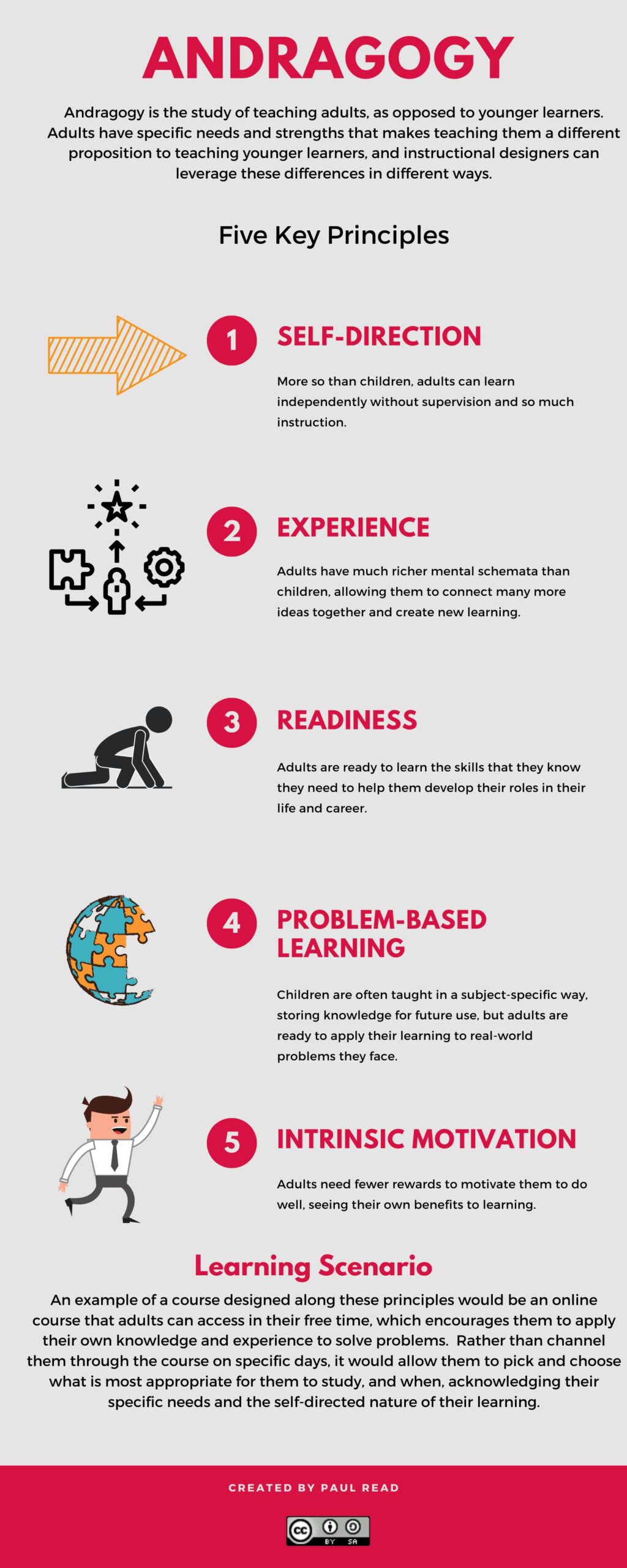
Comparing Learning Theories
Having considered a number of learning theories we were asked to produce an infographic showcasing some of the differences.
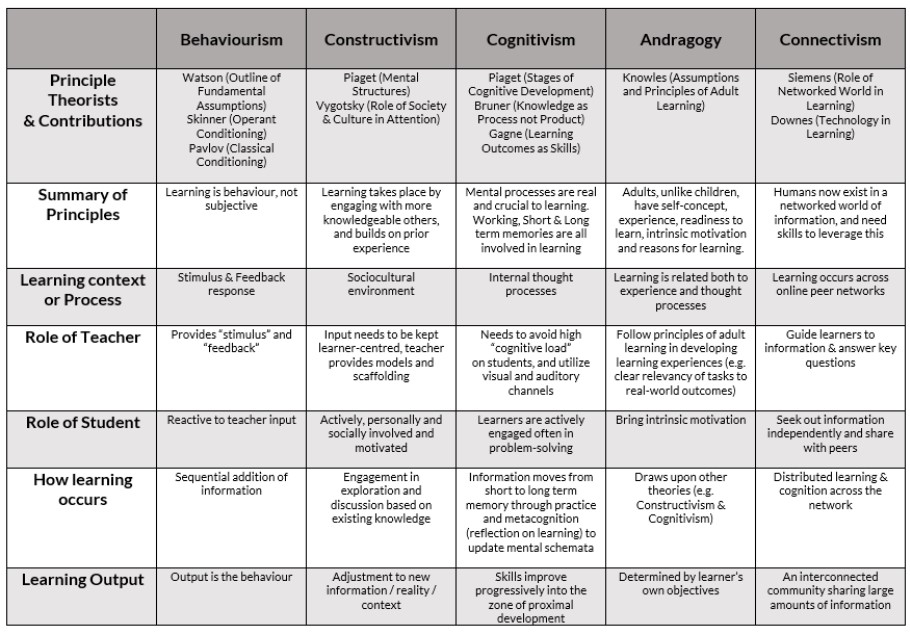
Learning Approaches & Authentic Assessment
Authentic Assessment 1 – Project Based Learning
One aspect of my current teaching practice is in training other teachers in the ICAO language requirements. Previously I had considered it a good idea to ask the teachers to plan lessons that meet these requirements, but hadn’t properly thought through the requirements of effective Project Based Learning as, for example, outlined by Genareo & Lyons (2015).
We could start by outlining the formative assessment criteria, in that by the end of the project students will have collaborated to produce some learning material that meets the ICAO Language Requirements for a given population of students.
We can then set a scenario, such as developing a lesson that teaches a specific topic with reference to the ICAO guidelines for – say – Comprehension and Fluency.
Providing learners with the project rubric and allowing them to change it to reflect their needs is in line with sociocognitive and andragogy principles.
Then the learners can be given time to research the topic they have been set, find suitable materials, etc. They then present to the rest of the group the product, or else present it as an actual lesson, before self-assessment of their achievement or not of the rubric as discussed at the beginning.
Authentic Assessment 2 – Gamification
In the study by Korkealahto and Siklander, gamification environments such as Seppo and tools for quiz-making such as Kahoot were shown to have demonstrable benefits in terms of adult learner engagement and retention of language.
I had not previously considered the possible benefits of using Kahoot in an andragogy environment, considering it more useful for teaching children or teenagers, but am now actively considering using it in my own practice of course development for adult Air Traffic Controller English.
Each day of the course is currently divided into topic-based units. Either for homework, or as part of the end-of-week assessment, vocabulary from these units can be compiled into interactive quizzes. This would encourage recall of the previously studied language, building in some behaviourist stimulus and response, with positive or negative feedback from the game. But as Korkealahto and Siklander (2018, p.14) point out “Sociocultural theory approaches language learning as an interaction in which learners mediate and internalise physical and cultural tools and practises”. Such tools provide affordances for the social and environmental motivations described by sociocognitive learning theory, as well as relying on the intrinsic motivations adults have as described by andragogy theories.
References
Genareo, V. R. & Lyons, R. (2015). Problem-Based Learning: Six Steps to Design, Implement, and Assess. Retrieved from https://www.facultyfocus.com/articles/course-design-ideas/problem-based-learning-six-steps-to-design-implement-and-assess/
Korkealehto, K. & Siklander, P. (2018). Enhancing engagement, enjoyment and learning experiences through gamification on an English course for health care students. Seminar.net, 14(1), 13-30.
Micro-Learning Project
As part of my work for LTD300x, I was confronted with learning about Articulate Storyline 3 as one of the digital tools.
Articulate provide a range of authoring software for educational purposes. With Storyline 3 and its more recent derivative Storyline 360, it is possible to create a range of interactive activities that leverage a number of different learning design principles with a relatively small degree of technical skill required on the part of the developer. It can be used to produce a wide range of different educational products.
I created an example activity here:
https://360.articulate.com/review/content/f2c752b2-9ce0-4654-9b6d-7ca899a2047e/review
I wanted to be able to explore some of Storyline’s functionality in allowing voiceovers, and other interactive activities, such as creating a flashcard animation.
Part of my goal in the short to medium term is to develop online learning courses, thus I was highly intrinsically motivated to learn the features of this tool. I can only agree with each of Knowles’ 5 assumptions about adult learning: I am aware that I want to create online courses, and that this is a useful tool to that end, so I can leverage my self-concept. I have learned similar software in the past, and can apply that knowledge to this. I am ready for this knowledge in a way I wouldn’t have been a year or two ago, since this is now high on my list of priorities. Likewise, this can be considered a practical reason to learn. And, as mentioned, I am motivated intrinsically or perhaps by the sense of future rewards.
Additionally, I used many of the ideas from Connectivism: one of my first ports of call was Youtube and Lynda.com in order to find instructional videos. I think perhaps this was my biggest “a-ha” moment, insofar as I hadn’t really connected my propensity to do this with a “learning theory”. Connectivism hadn’t previously made much sense to me, but now it seems obvious that of course this is what I do when trying to learn more or less anything: Google it.
Now that I reflect on it, I can also see some elements of Cognitivism in the way I approached using the software. There is an almost overwhelming amount of stuff you can do with this program, but they are laid out in a pattern familiar to me having used Powerpoint in the past, and with icons that more or less reflect the concept behind the action of the button. Thus I can make connections with existing knowledge and build upon my existing mental representations.
Finally, something like muscle memory comes into play – after repeating actions a few times with the program, one becomes familiar with the reward of getting it to do what you want it to do. Thus elements of behaviourist learning are presumably involved in reinforcing these.
LTD200x: Instructional Design Models
This module covers some of the frameworks used in instructional design in terms of the methodologies used by instructional designers to develop materials. We considered a number of different approaches, and thought about how to develop some of our own training materials using such ideas.

ADDIE Design Model
The ADDIE model is a popular instructional design framework used to create effective learning experiences. ADDIE stands for Analysis, Design, Development, Implementation, and Evaluation. The model provides a systematic approach to the creation of learning solutions, from the initial analysis of the training needs to the evaluation of the program’s effectiveness.
Here’s a brief overview of each phase of the ADDIE model:
- Analysis: In this phase, the instructional designer identifies the training needs of the target audience and analyzes the learning environment, including the available resources and constraints.
- Design: In this phase, the instructional designer develops the learning objectives and determines the instructional strategies, content, and assessments that will be used to meet those objectives.
- Development: In this phase, the instructional designer creates the learning materials, such as presentations, e-learning modules, and job aids.
- Implementation: In this phase, the training is delivered to the learners using the materials created in the development phase.
- Evaluation: In this phase, the instructional designer evaluates the effectiveness of the training program and identifies areas for improvement.
The ADDIE model is a flexible framework that can be customized to fit different training needs and learning environments. It is widely used in corporate training, academic settings, and other educational contexts.
As one of the course activities, I created a mind map using “Mind Meister”.
Dick & Carey Design Model Model
The second design model we looked at was the so-called Dick and Carey model.
It is named after its creators, Walter Dick and Lou Carey.
The Dick and Carey model is based on a systems approach to instructional design, and it emphasizes the importance of analysis and planning before the actual design and development of learning materials. The model consists of nine components that are organized into three phases: the pre-instructional phase, the instructional design phase, and the formative evaluation phase.
Here’s a brief overview of each component:
- Instructional Goals: The desired learning outcomes for the instruction are established.
- Instructional Analysis: The instructional designer analyzes the learners, the learning environment, and the instructional content.
- Entry Behaviors: The skills and knowledge that learners should have before beginning the instruction are identified.
- Performance Objectives: Specific, measurable learning objectives that are aligned with the instructional goals are developed.
- Assessment Instruments: The assessment instruments that will be used to measure the learners’ achievement of the performance objectives are identified.
- Instructional Strategy: The instructional methods and materials that will be used to facilitate the learning are selected.
- Instructional Materials: The instructional materials are developed and tested.
- Formative Evaluation: The instruction is evaluated during the development process to identify and correct any problems.
- Summative Evaluation: The effectiveness of the instruction is evaluated after it has been implemented.
The Dick and Carey model is a comprehensive and systematic approach to instructional design that emphasizes the importance of careful analysis, planning, and evaluation. It has been widely used in educational and corporate settings to create effective learning experiences.
Understanding by Design (UbD) or Backward Design Model
Understanding by Design (UbD) is a framework for designing effective curriculum, instruction, and assessment created by Grant Wiggins and Jay McTighe. The framework is based on the idea that effective teaching and learning should be focused on understanding, rather than memorization and regurgitation of facts.
It’s the one I’ve found most helpful in my context of language teaching and rater training. I use a blank template such as this.
The UbD framework is organized around three key stages, also referred to as “stages of backward design”:
- Stage 1: Identify Desired Results – In this stage, the educator starts by identifying the desired results of the learning experience, which are the learning outcomes or goals that students should achieve by the end of the unit, course, or program.
- Stage 2: Determine Acceptable Evidence – In this stage, the educator decides what kind of evidence will be used to determine if the students have met the desired results. This includes developing assessments that measure the learning outcomes.
- Stage 3: Plan Learning Experiences and Instruction – In this stage, the educator plans the learning experiences and instructional activities that will support students in achieving the desired results and provide opportunities for them to demonstrate their understanding through the assessments developed in Stage 2.
The UbD framework emphasizes the importance of “backward design,” meaning that educators should start with the desired results and work backward to design the learning experiences and assessments that will support students in achieving those outcomes. The framework also emphasizes the importance of designing learning experiences that are authentic, engaging, and meaningful to students, and that are aligned with the desired results and assessments.
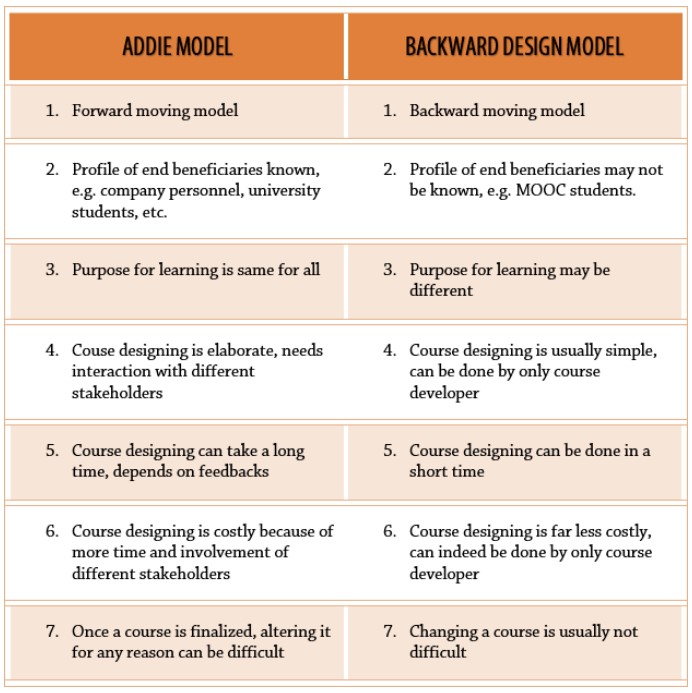
Rapid e-Learning
Rapid eLearning design is an approach to creating online courses and digital learning materials that emphasizes speed and efficiency. It is often used in corporate training, where there is a need to quickly develop and deliver training materials to employees.
The rapid eLearning design process typically involves the use of authoring tools and pre-built templates that allow instructional designers to quickly create and customize eLearning modules. The process typically involves the following steps:
- Define Learning Objectives: The first step is to identify the learning objectives and outcomes that the eLearning module will be designed to achieve.
- Identify Content: Next, the instructional designer identifies the content that will be included in the eLearning module. This could include existing training materials, such as presentations or manuals, or new content that needs to be developed.
- Design and Development: Once the content is identified, the instructional designer uses authoring tools to design and develop the eLearning module. This involves creating visual elements, such as graphics and animations, and selecting appropriate media, such as videos or audio files.
- Review and Testing: The eLearning module is reviewed and tested to ensure that it meets the learning objectives and functions properly. Any necessary revisions are made at this stage.
- Deployment: The final step is to deploy the eLearning module to the learners. This may involve uploading it to a learning management system or distributing it via email or another platform.
Rapid eLearning design is an efficient way to create effective online training materials quickly. However, it is important to ensure that the eLearning modules are well-designed and meet the learning objectives and outcomes. Typical software used for it include Articulate Storyline, Adobe Captivate, iSpring Suite, Lectora or Camtasia.
Instructional Systems Development
Robert Gagne and Robert Mager are two influential figures in the field of instructional design, and they have made significant contributions to the development of the ISD process.
Robert Gagne was a psychologist and instructional designer who developed a theory of instruction that focused on the cognitive processes involved in learning. His theory proposed that learning occurs through a sequence of internal mental processes, and he identified nine instructional events that can facilitate this process, such as gaining attention, presenting the content, providing guidance, and assessing performance.
Gagne’s theory of instruction has had a significant impact on instructional design, and his ideas continue to be influential in the field today. Many instructional designers use Gagne’s nine instructional events as a guide when designing instructional materials.
Robert Mager was a training consultant and instructional designer who developed a system for designing instructional objectives that are specific, measurable, and achievable. He believed that clear learning objectives are essential for effective instruction, and his system provides a framework for developing objectives that are well-defined and aligned with the desired learning outcomes.
Mager’s system for designing objectives has become a widely used tool in instructional design, and it is known as the “Mager’s Objectives Model.” The model emphasizes the importance of designing objectives that are specific, observable, and measurable, and it provides a structured approach for developing objectives that meet these criteria.
In summary, Gagne and Mager are two influential figures in the field of instructional design who have made significant contributions to the development of the ISD process. Gagne’s theory of instruction has influenced instructional design by highlighting the importance of cognitive processes in learning, while Mager’s system for designing objectives has become a widely used tool for developing effective instructional materials.
Gagne believed that well-written learning objectives should include four components:
- Learning Outcome: The objective should describe the specific learning outcome or performance that the learner is expected to achieve.
- Conditions: The objective should describe the conditions under which the learner will be expected to perform the behavior or achieve the outcome.
- Criterion: The objective should describe the criterion for successful performance or achievement of the outcome.
- Degree: The objective should describe the level of mastery that the learner is expected to achieve, such as recall, comprehension, application, analysis, synthesis, or evaluation.
For example, a well-written objective might look like this:
“After completing the course on project management, the learner will be able to identify the critical path in a project plan with 90% accuracy.”
In this example, the learning outcome is identifying the critical path in a project plan, the conditions are completing the course on project management, the criterion is 90% accuracy, and the degree is analysis.
Gagne’s approach to writing objectives focuses on the cognitive processes involved in learning and places emphasis on the mastery of specific skills or knowledge. While there are some similarities between Mager’s and Gagne’s approaches, such as the use of conditions and criteria, Gagne’s approach emphasizes the cognitive processes involved in learning, while Mager’s approach emphasizes the use of action verbs to describe specific behaviors.
Writing Learning Objectives – Bloom’s Taxonomy
Bloom’s Taxonomy is a framework for categorizing learning objectives in terms of six levels of cognitive complexity, ranging from lower-order thinking skills to higher-order thinking skills. When writing a learning goal, Bloom’s Taxonomy can be used as a guide to ensure that the objective is specific, measurable, and aligned with the desired level of cognitive complexity.
Here are the steps to use Bloom’s Taxonomy to write a learning goal:
- Identify the desired level of cognitive complexity: Start by identifying the level of cognitive complexity that you want the learner to achieve. This could range from lower-order thinking skills, such as recalling facts or identifying simple concepts, to higher-order thinking skills, such as evaluating, analyzing, and creating.
- Select the appropriate verb: Choose a verb that is appropriate for the desired level of cognitive complexity. The verbs in Bloom’s Taxonomy are specific to each level and can help to clarify the cognitive demands of the learning goal.
- Specify the learning context: Specify the context in which the learner will be expected to apply the knowledge or skill. This could include a particular scenario or task that requires the learner to use the knowledge or skill in a specific way.
- Write the learning goal: Combine the verb, the learning context, and the level of cognitive complexity to write a clear and specific learning goal. The goal should describe the specific knowledge or skill that the learner is expected to acquire and how they will demonstrate their understanding.
Here is an example of a learning goal written using Bloom’s Taxonomy:
Level: Analyzing
Verb: Analyze
Context: Given a data set from a market research study
Goal: Analyze the data set from the market research study to identify key trends and patterns, and develop a set of recommendations for improving sales and marketing strategies.
In this example, the learning goal is specific, measurable, and aligned with the desired level of cognitive complexity. By using Bloom’s Taxonomy to guide the writing of learning goals, educators can ensure that the objectives are well-defined, aligned with the desired learning outcomes, and provide clear guidance for learners to achieve those outcomes.
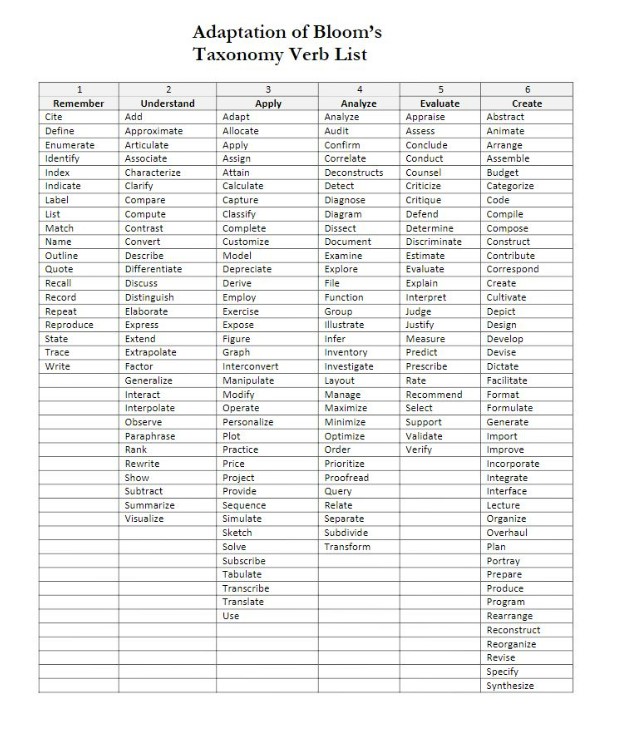

LTD300x – Digital Media, New Tools & Technology
This third module covers the use of digital tools, such as audio (podcasting), digital images and text, video editing and accessibility requirements, and tools for interactive learning.
Digital Media, Text & Visual Design
Digital media and visual design are two interconnected fields that involve the creation and use of visual and multimedia content in various contexts, including marketing, advertising, entertainment, education, and communication.
Digital media refers to any media that is created or distributed using digital technology, such as images, videos, animations, audio, and text. Digital media can be accessed and distributed through various digital platforms, such as social media, websites, mobile apps, and streaming services.
Visual design is the practice of creating visual content that communicates a message or idea to a specific audience. This can include graphic design, typography, illustration, photography, and animation, as well as the use of color, composition, and layout.
Universal Design for Learning (UDL) is a framework for designing and delivering educational content that is accessible and effective for all learners, including those with diverse backgrounds, abilities, and learning styles. The UDL framework is based on three core principles:
- Multiple means of representation: Providing learners with diverse ways to acquire information and knowledge. This could include presenting information through text, audio, video, images, and other multimedia formats, as well as using different modalities, such as sign language or captions.
- Multiple means of action and expression: Providing learners with diverse ways to demonstrate their knowledge and skills. This could include providing options for learners to express themselves through writing, speaking, drawing, or other forms of expression, as well as using different tools and technologies to support their learning and communication.
- Multiple means of engagement: Providing learners with diverse ways to stay motivated and engaged in the learning process. This could include providing options for learners to set goals, make choices, receive feedback, and collaborate with others, as well as using different instructional strategies and techniques to support their learning and engagement.
By applying these principles, educators can create flexible and inclusive learning environments that accommodate the diverse needs and preferences of all learners, including those with disabilities, English language learners, and those with different learning styles and preferences. The UDL framework also supports the use of assistive technologies and other tools that can enhance accessibility and support learners with diverse needs.
Overall, the UDL framework emphasizes the importance of providing learners with multiple ways to engage with and master the content, and it promotes the use of inclusive and accessible instructional practices that support the diverse needs and preferences of all learners
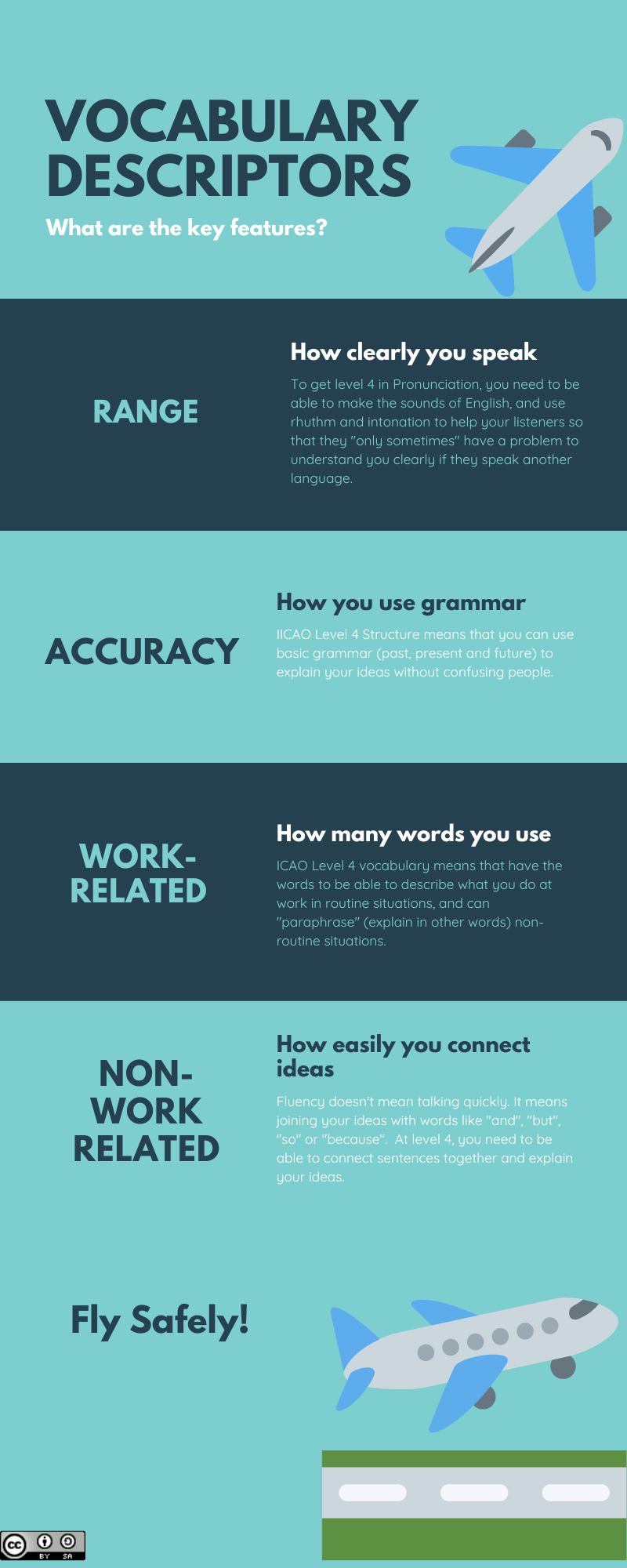
We used some of the principles of colour, and then tried to use visual editors to adapt free visuals which can be found at sites like:
Visual design theory is a broad and interdisciplinary field that encompasses principles and practices from graphic design, typography, color theory, composition, and other related fields. Some basic elements of visual design theory include:
- Line: The basic building block of visual design, lines can be used to create shapes, textures, and patterns, as well as to convey movement, direction, and emotion.
- Shape: Shapes are formed by connecting lines and can be geometric, organic, or abstract. They can be used to create contrast, balance, and hierarchy in a design.
- Color: Color is a powerful tool in visual design, as it can evoke emotion, create contrast, and convey meaning. Color theory explores the relationships between colors, such as complementary, analogous, and monochromatic color schemes.
- Space: Space refers to the area around and within a design. Positive space is the area occupied by the design elements, while negative space is the area around the design. Space can be used to create balance, contrast, and depth in a design.
- Typography: Typography is the art and technique of arranging type to make written language legible, readable, and appealing. Typography includes the selection of typefaces, the use of font sizes, spacing, and hierarchy, and the placement of text within a design.
- Texture: Texture refers to the surface quality of a design, which can be created through the use of patterns, images, and other visual elements. Texture can add depth, contrast, and visual interest to a design.

Screencasting & Video Editing
The aim of these modules was to become familiar with storyboarding, and then producing simple videos including closed captions, using tools like Camtasia.
I made a simple video about using the ICAO Holistic Descriptors.
The storyboard is here.
The video is below.
Audio for e-Learning
In this module we were tasked with using Audacity or other tools to create a podcast, experimenting with the use of creative commons music.
Instructional Need: To introduce the wording and basic meaning of the ICAO Holistic Descriptors for Language Proficiency in Aviation.
Learning Activity Audience: English teachers familiar with teaching, but who don’t know what the ICAO Language Requirements are, and so need a basic introduction to the concepts.
https://soundcloud.com/the-english-site/paul/s-EsTBk
I chose to use Audacity for this because I already had some experience using it as a basic recorder, but had never tried adding music to give it more production value, so I wanted to experiment with that. I chose a random track that had suitable copyright (see below), and tried splicing it and fading it to make it fit with my voice. I wanted to add some audio between each of the 5 points in the text, so as to break it up a little bit. I don’t think the choice of music is great, but I am glad I can now say I’ve tried editing voice and music together, and will do so better next time.
Music:
Positive Start by Mixaund | https://mixaund.bandcamp.com
Music promoted by https://www.free-stock-music.com
